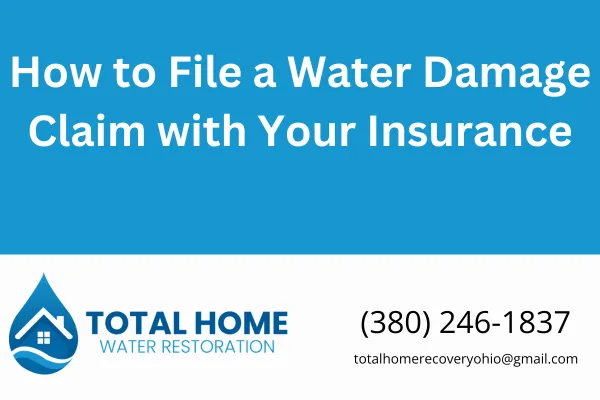
How to File a Water Damage Claim with Your Insurance
How to File a Water Damage Claim with Your Insurance
When your home gets hit with water damage—whether it’s a burst pipe, leaky roof, or flooded basement—the last thing you want is a long fight with your insurance company. I’ve been on job sites across Grove City, Columbus, and surrounding areas, and I’ve seen what works (and what delays everything). Here's what to do if you’re filing a claim.
Step 1: Stop the Damage ASAP
Your insurance policy expects you to minimize further damage—this is called your “duty to mitigate.” That means:
Shut off the water source
Remove standing water (safely)
Call a certified water damage restoration company like us
If you don’t act quickly, your claim might get denied. We’ve seen it happen.
Step 2: Call Your Insurance Company
Once you’ve stopped the leak or flood, call your insurer. They’ll open a claim and assign an adjuster. Be ready to provide:
Policy number
Date/time the damage occurred
Description of what caused it (pipe burst, sump pump failure, etc.)
Tip: Don’t clean up too much before they’ve seen it. Take photos and videos first.
Step 3: Document Everything
This is huge. You’ll need proof. Document:
Where the water came in
What areas were affected (walls, ceilings, floors)
Damaged personal property
All receipts (hotel, meals if displaced, cleanup costs)
We’ll also provide you with moisture readings, damage mapping, and itemized repair estimates—these help push your claim forward faster.
Step 4: Get a Professional Assessment
Have a licensed contractor inspect the damage. We follow IICRC S500 water damage restoration standards—and insurance adjusters respect that.
We’ll give you a full written scope of work, including:
Cause of loss (e.g., failed plumbing fitting)
Categories and classes of water (clean, gray, or black)
Structural drying needs
Necessary demo (drywall, flooring, etc.)
Step 5: Meet with the Adjuster (or Let Us Handle It)
We’ll meet your insurance adjuster on-site to walk them through the damage. This step is critical. If we’re involved early, we can often:
Make sure nothing gets missed
Push for full coverage (not just patchwork)
Explain why certain repairs are required by code
For example, Ohio’s Residential Code often requires full room drywall replacement if moisture reaches a certain height.
Step 6: Get Approval—Then Get to Work
Once your claim is approved, you’ll get a payout offer (often called an ACV or actual cash value first). We can help review this and make sure it’s fair.
Then we’ll get started with:
Water extraction and drying
Tear-out and repairs
Mold prevention (if needed)
And we’ll bill your insurance company directly in most cases.
Step 7: Track Payments & Finalize
Some insurers split payments:
ACV (Actual Cash Value) up front
RCV (Replacement Cost Value) after work is complete
We’ll provide all the paperwork they need to release the final payment. You focus on getting your home back to normal—we’ll handle the red tape.
Common Claim Mistakes (Avoid These)
Waiting too long to report the damage
Throwing away damaged items before documenting
Using a contractor who doesn’t work with insurance
Not checking for mold growth early
FAQs
Q: Does insurance always cover water damage?
A: No. Most policies cover sudden and accidental damage (like a burst pipe). They don’t usually cover gradual leaks or neglect.
Q: How fast should I file the claim?
A: Right away. The longer you wait, the more likely your claim will get denied or reduced.
Q: What if the insurance payout isn’t enough?
A: We’ll help supplement your claim with supporting evidence—scope sheets, code requirements, and industry standards.
Need Help? Call Tyler.
At Total Home Water Restoration, we don’t just dry out homes—we walk you through the insurance mess too. We’ve helped dozens of homeowners across Grove City, Columbus, and nearby towns navigate this process the right way.
📍 4141 Hoover Rd, Grove City, OH 43123
📞 380-246-1837
We’ll treat your home like it’s our own.
“From disaster to done right. We fix it like it’s our own home.”
